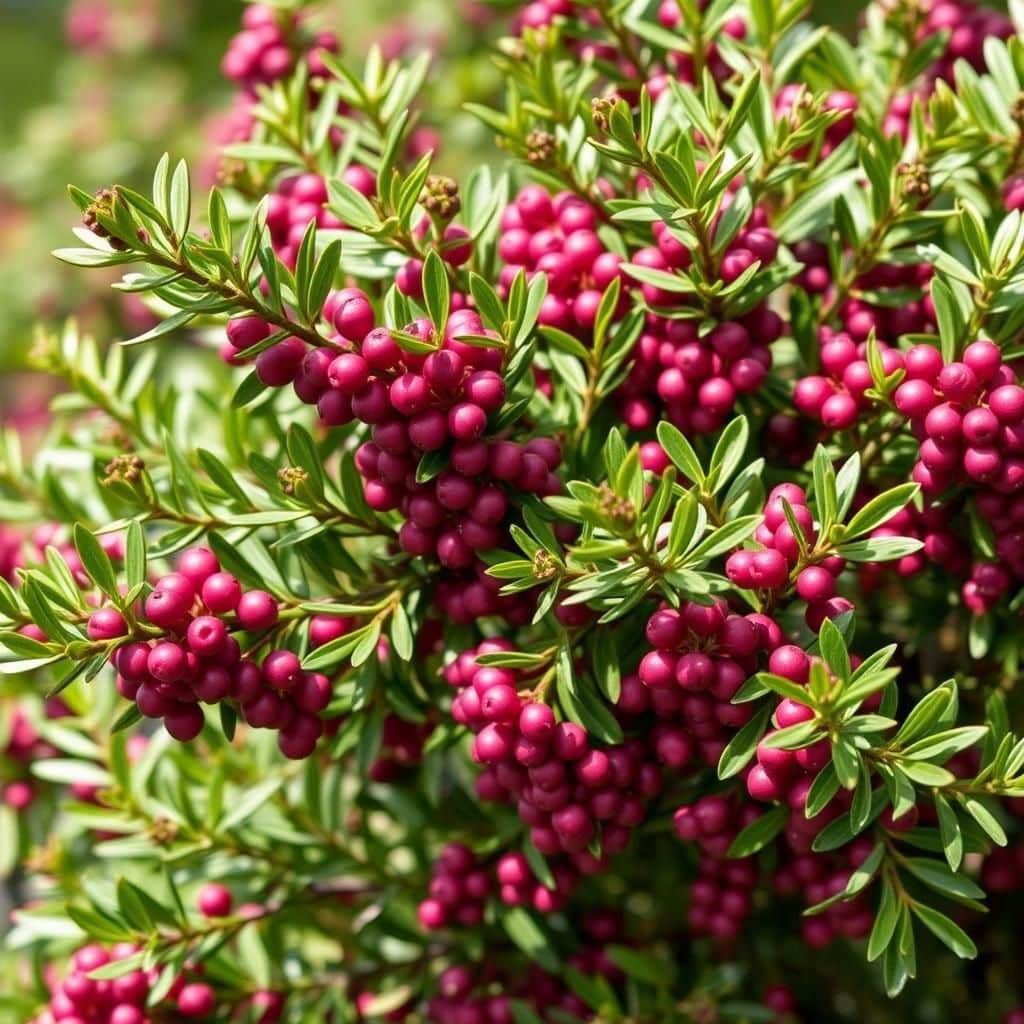Everything You Need to Know About Ligustrum Vulgare Common Privet: Care, Benefits, and Uses

Ligustrum vulgare, commonly known as common privet, is a versatile and hardy shrub widely appreciated for its dense foliage and adaptability in various landscapes. Frequently utilized in hedging and privacy screens, this perennial plant boasts a range of benefits, including its low maintenance requirements and resilience to different environmental conditions. In this article, we will explore the essential aspects of caring for Ligustrum vulgare, the advantages it offers, and its various uses in gardening and landscaping. Whether you’re a seasoned gardener or a novice looking to enhance your outdoor space, understanding this resilient plant can significantly enrich your gardening experience.
The Importance of Ligustrum Vulgare (Common Privet) in Landscaping
Ligustrum vulgare, commonly known as common privet, is a highly versatile and resilient shrub that plays a significant role in landscaping and garden design. This species is widely appreciated for its fast growth and ability to form dense hedges, making it an ideal choice for creating privacy screens or windbreaks in residential areas. Its lush green foliage and adaptability to various soil types contribute to its popularity among gardeners. Additionally, common privet is often used in formal hedges due to its ease of maintenance and responsive growth to trimming. While it can be considered invasive in some regions, when managed appropriately, it can enhance the aesthetic appeal and functionality of outdoor spaces.
Botanical Characteristics
Ligustrum vulgare is a member of the Oleaceae family and is characterized by its semi-evergreen to deciduous nature, depending on the climate. The plant can grow to heights of around 3 to 15 feet, with a similar spread, forming a dense and bushy appearance. Its leaves are opposite, oval-shaped, and typically measure 1 to 3 inches in length, providing a lush green backdrop throughout the growing season. In summer, small, fragrant white flowers appear, followed by dark purple to black berries in the fall, which are attractive to birds but can be toxic to humans.
Cultural and Environmental Benefits
Common privet serves various ecological purposes in landscaping. It not only offers habitat for local wildlife, particularly birds that feed on its berries, but also aids in soil stabilization and wind protection. Its dense growth can act as a natural barrier against noise pollution, making it valuable in urban settings. Moreover, common privet's ability to thrive in different soil conditions, including poor soil, makes it an asset for sediment control and erosion prevention on disturbed lands.
Maintenance and Care
Keeping Ligustrum vulgare healthy requires regular maintenance practices, including pruning, watering, and pest management. It is best to prune during late winter or early spring as it helps encourage new growth and maintain the desired shape for hedges. Watering should be consistent, especially during dry spells, but this shrub is generally drought-tolerant once established. Monitoring for pests such as aphids and scale insects is crucial, but most issues can be handled with appropriate horticultural oils or insecticidal soaps.
See also:
Invasiveness and Management
In some areas, common privet is considered invasive, as it can spread rapidly and outcompete local flora. To manage it effectively, gardeners should remain vigilant and remove any unwanted seedlings promptly. Where it is prohibited or considered particularly troublesome, alternative native shrub species may be recommended to avoid ecological disruption. Educating oneself on local regulations regarding invasive species is essential for responsible gardening and landscape management.
Uses in Landscaping and Design
Ligustrum vulgare is commonly employed in landscaping for creating formal hedges, privacy screens, and decorative borders. Its ability to be shaped makes it ideal for topiary or low-maintenance garden features. Additionally, it can function well in mass plantings, providing structure and formality to landscapes. The adaptability of this shrub allows it to thrive in diverse settings, from traditional gardens to modern landscapes, accommodating a wide range of aesthetic preferences.
| Characteristic | Details |
|---|---|
| Height | 3 to 15 feet |
| Spread | 3 to 15 feet |
| Foliage | Oval-shaped, 1 to 3 inches |
| Flowers | Small, fragrant white flowers |
| Berries | Dark purple to black |
A Comprehensive Guide to Ligustrum Vulgare Care and Maintenance
Ligustrum Vulgare, commonly known as common privet, is a hardy shrub that thrives in a variety of conditions, making it an excellent choice for gardeners seeking a low-maintenance plant. This adaptable species can be used for hedging, privacy, or ornamental purposes, requiring only basic care such as regular pruning to maintain its shape and health. Common privet is known for its glossy green foliage and small, fragrant flowers, which attract pollinators. Additionally, its tolerance to a wide range of soils and climates further underscores its utility in landscaping, providing both aesthetic and functional benefits.
Benefits of Planting Ligustrum Vulgare
Ligustrum Vulgare offers numerous benefits to gardeners and landscapers alike. Its fast growth makes it an ideal choice for quickly establishing boundaries or privacy screens. Moreover, this shrub is highly versatile and can thrive in both sunny and partially shaded areas, making it suitable for various landscaping designs. Another significant advantage is its ability to withstand different soil types, allowing it to flourish in urban settings or rural gardens. Additionally, its dense growth habit provides habitat for local wildlife, enhancing biodiversity in the area.
Common Uses of Ligustrum Vulgare
Common privet is primarily used for creating hedges and borders, thanks to its dense and bushy growth. It can also serve as an effective barrier for noise reduction and wind protection, making it an attractive option for homeowners seeking privacy. Beyond its practical applications, Ligustrum Vulgare can be shaped into topiaries or incorporated into formal garden layouts, adding an element of sophistication. Furthermore, its attractive flowers can be left for pollinators, adding ecological value to your garden.
See also:
Care and Maintenance Tips
Caring for Ligustrum Vulgare involves a few fundamental practices to ensure its long-term health. Regular pruning is essential to maintain its shape and encourage new growth, ideally conducted in late winter or early spring before new foliage appears. Watering is necessary during dry spells, particularly for younger plants, to establish a robust root system; however, established privets are relatively drought-resistant. Fertilization in early spring with a balanced, slow-release fertilizer will support healthy growth and lush foliage, ensuring your privet remains a vibrant part of your landscape.
Pest and Disease Management
Although Ligustrum Vulgare is generally resilient, it can occasionally encounter issues with pests such as aphids or scale insects. Regular inspection of the foliage is crucial, and when infestations occur, the application of insecticidal soap can effectively manage the problem. Additionally, proper spacing when planting can help improve air circulation, reducing the risk of fungal diseases. Keeping the area free of debris and dead leaves will also promote overall plant health, ensuring that your privet remains robust and thriving.
Choosing the Right Location for Ligustrum Vulgare
Selecting the right location for your Ligustrum Vulgare is vital for its successful growth. This shrub prefers a site with full sun to partial shade, although it thrives best when receiving at least six hours of direct sunlight daily. Well-draining soil is also important; while common privet can adapt to various soil types, it performs optimally in loamy or sandy loam soil. Avoid flood-prone areas where water may pool, as excessive moisture can lead to root rot. Considering these factors will help ensure that your Ligustrum Vulgare flourishes in your garden.
Questions from Our Readers
What is Ligustrum vulgare, commonly known as common privet?
Common privet, or Ligustrum vulgare, is a species of shrub that belongs to the olive family, commonly used for hedges and landscaping. It is known for its dense foliage and fast growth, making it a popular choice for creating privacy screens in gardens and residential areas.
How do you care for Ligustrum vulgare?
Caring for Ligustrum vulgare involves providing adequate sunlight, regular watering, and pruning to maintain its shape. This hardy plant tolerates a variety of soil conditions, but ensuring it has well-draining soil will promote its health and longevity.
See also:
Is Ligustrum vulgare invasive?
Yes, Ligustrum vulgare is considered invasive in some regions due to its ability to spread rapidly and outcompete native plants. Gardeners should be cautious when planting it and monitor its growth to prevent it from taking over surrounding areas.
Can Ligustrum vulgare be grown in containers?
While it’s possible to grow Ligustrum vulgare in containers, it requires a large enough pot to accommodate its root system. Regular pruning and proper watering are essential to keep the plant healthy and prevent it from becoming root-bound in a smaller container.

If you want to read more articles like Everything You Need to Know About Ligustrum Vulgare Common Privet: Care, Benefits, and Uses, we recommend you check out our Hedges category.
Leave a Reply
Related Articles